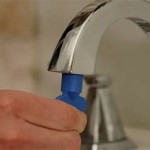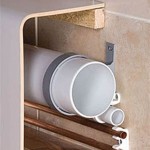Best Way to Remove Old Bathroom Tile
Removing old bathroom tile can be a daunting task, but it is a necessary step for many renovation projects. Whether you're looking to update the look of your bathroom or are dealing with cracked, chipped, or outdated tile, knowing the right techniques can make the process smoother and less stressful. This article will guide you through the best ways to remove old bathroom tile, providing practical advice and safety considerations.
1. Assess the Tile Type and Installation
The first crucial step involves understanding the type of tile and how it was installed. Inspect the tile closely to determine if it is ceramic, porcelain, or natural stone. Knowing the materials will help you choose the appropriate tools and methods for removal.
Next, examine the tile installation. Is it laid directly on the subfloor, or is there a layer of mortar or thinset underneath? If there is a layer of mortar or thinset, it will require additional effort to remove. Observe if the tile is glued to the subfloor or if it is set in mortar with grout lines. This will also influence your approach to removing the tile.
2. Safety First: Wear Protective Gear
Before you begin, it is essential to prioritize safety. Wear appropriate protective gear, including safety glasses, gloves, and a dust mask. The process of removing tile can generate dust and debris, so protecting yourself from these hazards is crucial.
Furthermore, use a respirator or dust mask to prevent inhaling the dust particles, which can potentially irritate your respiratory system. Sturdy work boots or shoes will provide firm footing, and safety glasses will shield your eyes from flying debris.
3. Tools for the Job: Gather Necessary Equipment
To remove old bathroom tile efficiently, gather the following tools:
- Chipping Hammer and Cold Chisel: For breaking through the tile and detaching it from the subfloor.
- Pry Bar: Used to leverage and lift tile, especially if it's glued to the subfloor.
- Utility Knife: For scoring grout lines and separating tiles.
- Grout Removal Tool: A specially designed tool to remove grout from between the tiles.
- Gloves: Protect your hands from sharp edges and dust.
- Safety Glasses: Shield your eyes from flying debris.
- Dust Mask or Respirator: Protect your lungs from dust particles.
- Bucket and Trash Bags: Collect tile fragments and debris.
- Shop Vacuum: Remove dust and debris from the work area.
4. Removing Grout: Key to Tile Separation
Start by carefully removing the grout between the tiles. This can be achieved with a grout removal tool, but a utility knife or even a screwdriver can be used for smaller areas. Gently work the tool along the grout lines to loosen and chip the grout away.
Once the grout is removed, you can begin the process of detaching the tiles from the subfloor. Take extra care to avoid damaging the subfloor, as this may require additional repairs before installing new tile.
5. Detaching the Tile: Techniques for Different Installations
The method for detaching the tile will depend on how it was installed. If the tile is glued to the subfloor, a pry bar can be used to lift and separate the tile. Place the pry bar under the edge of the tile and leverage it gently to loosen the bond. For tiles set in mortar with grout lines, a chipping hammer and cold chisel are effective tools.
Use the chipping hammer and cold chisel to break through the tile and detach it from the mortar base. Be cautious during this step, as the tiles can break into sharp pieces. Work systematically, removing one tile at a time, and disposing of the debris carefully.
6. Removing Mortar or Thinset: Thorough and Clean
Once the tiles are removed, you may need to remove any remaining mortar or thinset from the subfloor. This can be done using a chisel and hammer, a scraper, or a power sander. If using a power sander, wear appropriate safety gear and follow manufacturer instructions for safe operation.
After removing the mortar or thinset, clean the subfloor thoroughly to ensure a smooth surface for the installation of new tile. This will prevent unevenness and ensure a professional-looking finish for your new bathroom tile.
7. Final Touches: Preparing for New Tile
After removing the old tile, you may need to address any imperfections in the subfloor. Patch any cracks or holes with a suitable patching compound and allow it to dry completely before proceeding. Then, you can clean the subfloor one final time to eliminate any loose debris or dust particles.
Once the subfloor is ready, you can proceed with the installation of your new bathroom tile. Following the appropriate installation techniques and using high-quality materials will ensure a long-lasting and beautiful bathroom that you can enjoy for years to come.

The Best Way To Remove Old Shower Tile

Easy Diy Guide On Removing Tiles From Walls Fantastic Handyman Au

How To Remove A Tile Floor

Preparing Walls For Tiling Removing Old Tiles Bathroom Guru

How To Remove Wall Tiles

How To Remove Old Tiles A Step By Guide Walls And Floors

How To Remove A Tile Backsplash Homeserve Usa

How To Remove Tiled Shower Walls The Floor Elf

Preparing Walls For Tiling Removing Old Tiles Bathroom Guru

How To Demo Old Bathroom Mud Wall Tile Over Concrete And Wire Mesh
Related Posts







